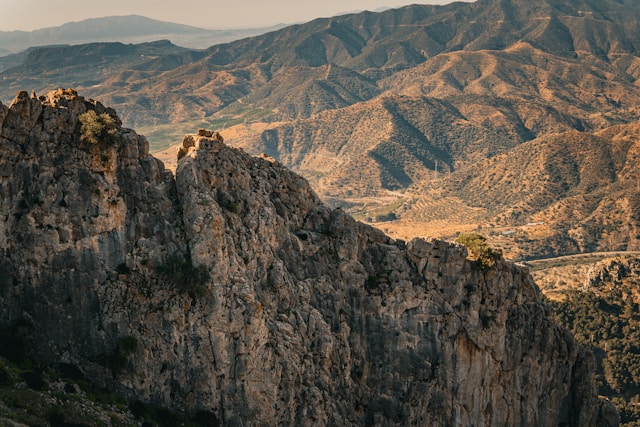Andalusia is the region with which most foreigners identify all of Spain. Sunny weather, flamenco rhythm, sea beaches, rest during siesta hours, cooling gazpacho, aroma of sherry wine, southern Andalusian temperament. All this, together or separately, only brings to mind positive associations.
Andalusia is an autonomous community of Spain made up of eight provinces. Hardly anyone realizes how diverse and surprising it can be in many respects. The phenomenon of Andalusia lies in its expressiveness, especially in the regional culture, varied landscapes, the weather that inspires life and the spontaneity of the indigenous inhabitants. The monuments of Andalusia are marked by the history of Muslim domination on the Iberian Peninsula during the Middle Ages.
Andalusia’s Territorial Coverage
Andalusia has a very large territory stretching from the west to the east of the Atlantic to the long stretch of the Mediterranean coast. It has 87,268 km². This region is inhabited by about 8.4 million. people. The distance between the Atlantic, Andalusian city of Huelva and the Mediterranean coast of Costa de Almería is over 500 km. There is a border with Portugal in the northwest of Andalusia. In the north, this region borders on two Spanish autonomous communities: Extremadura and Castilla-La Mancha. In its eastern part, in turn, is the border with the Murcia region. To see most of the interesting places in Andalusia, you would have to stay here for at least two weeks. Despite this, many historic cities and other tourist attractions are easily reachable from the Andalusian coast. Multi-day sightseeing tours are also organized.
Seville – the capital of Andalusia
Seville is the largest city in Andalusia. It is the fourth largest metropolis in Spain in terms of the number of inhabitants (nearly 700,000). It is situated in the western part of the autonomous community inland. It is approximately 70 km from the Atlantic coast and has a dry, hot climate. The heat is frequent there from April to mid-October.
The Andalusian capital’s old town is the largest in the country in terms of area and the sixth in the world. Its three most important monuments (La Giralda Cathedral, the Real Alcázar palace complex and the Archives of India are inscribed on the UNESCO World Heritage List. The city’s biggest attractions also include the Maria Luisa Park with its Piazza di Spagna, the former Jewish quarter Barrio de Santa Cruz. , the model Andalusian palace Casa Pilatos representing a combination of Italian Renaissance architecture with the Mudejár style, the old Cigar and Cigarette Factory known for the famous Carmen opera and the avant-garde structure with panoramic terraces called Metropol Parasol. The capital of Andalusia has many interesting districts. The most visited are El Arenal and Santa Cruz, which is part of the old town (Casco Antiguo) on the right bank of the Guadalquivir River. with a specific atmosphere. This is where you can feel the best flamenco lima. While in Seville, you must visit one of the typical bars serving more or less classic Andalusian tapas. It was there that the custom of tapeo, popular in Spain, was born.
Granada and Alhambra – the pearl in the crown of Andalusia
To be in Andalusia and not to visit Granada (Spanish) is like being in Paris and not seeing the Eiffel Tower. The Andalusian city is famous for the most beautiful Arabian palace in Europe – La Alhambra. It is the most visited monument in Spain, of course inscribed on the UNESCO list. Granada can boast not only the aforementioned building and the beautiful Generalife gardens, which are included in the palace complex. It is the sensual essence of the “Andalusian spirit” with the Arab neighborhood of Albaicín and the Barrio del Sacromonte saturated with flamenco atmosphere. There are also Christian temples worth visiting, among which the Renaissance-Baroque cathedral and the church of Iglesia de San Juan de Dios stand out.
The province of Andalusia, with its capital in Granada, has a small strip of the Costa Tropical, which, according to scientists, has the best climate in Europe. However, the vast majority of it offers mountainous landscapes typical of the interior of the entire region. There is the highest massif of mainland Spain – Sierra Nevada mountains with the summit of Mulhacén (3,478 m above sea level) and the national park Parque Nacional de Sierra Nevada. They are ideal places for a winter break in the ski resort of Pradollano, hiking and admiring nature. In the foothill valleys of Las Alpujarras, you can visit several picturesque Andalusian white villages and towns. A surprising attraction of this part of Andalusia is the town of Guadix with a district of cave houses and the nearby castle Castillo de La Calahorra. National Geographic magazine named Montefrío near Granada as one of the most beautiful in the world.
Source: hiszpania-portal.pl
